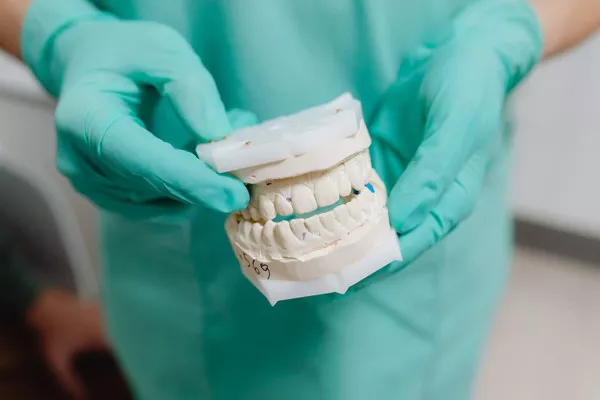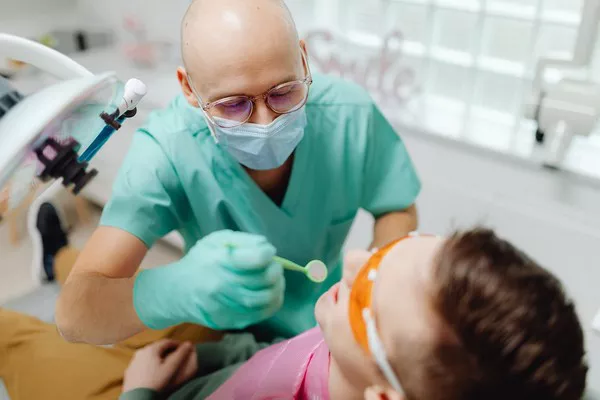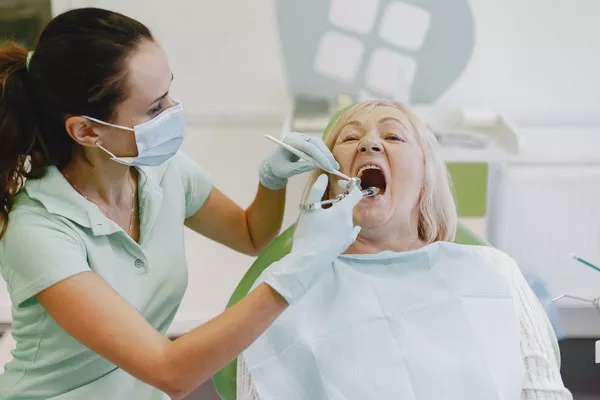Clinical classification and Treatment of periodontal disease Periodontal disease refers to the disease of the tissues surrounding the teeth.
The clinical treatment of 456 cases is reported as follows.
1.1 Borderline gingivitis Borderline gingivitis is referred to as limbal gingivitis.
The lesions were mainly confined to the gingival margin and gingival papilla, and did not affect the deep periodontal tissue.
Symptoms are not obvious, sometimes gingivitis, itching or bad breath.
Gingival bleeding may occur when there is local irritation.
Treatment: Removal of local irritants, such as removal of plaque and calculus by a specialized supragingival dispenser.
Eliminate food impaction, remove bad repair, etc.;
When the inflammation is severe, local drugs can be used for treatment, such as washing gingival sulcus with 1%-3% hydrogen peroxide solution, wiping dry and then applying 10% iodine mixture or 2% iodine glycerol, gargling with 0.05%-0.2% chlorhexidine solution, compound borax mouthwash, 0.3% zinc chloride solution, etc.
1.2 Hypertrophy gingivitis Hypertrophy gingivitis is a chronic inflammation caused by long-term local stimulation of gingival tissue, which is characterized by obvious inflammatory swelling and proliferation of gingival tissue.
Gingiva is dark red or dark red, soft tissue, easy to bleed when probing.
The gingival papilla is bulbous.
Treatment :(1) removal of local irritants, such as scraping of calculus, elimination of food impaction, removal of bad restorations, etc., breathing with the mouth, should be targeted at the cause of treatment.
Occlusal abnormality, can be grinding teeth or orthodontic treatment.
(2) For drug treatment, 1% ~ 3% hydrogen peroxide solution can be used to wash the gingival pocket, and iodine mixture or medidil, spiramycin film can be added to the bag, and gargle with mouthwash.
If abscess occurs, can cooperate with the treatment of antimicrobial drugs.
(3) After the above treatment still can not make the gingiva normal physical appearance, can do gingivectomy.
1.3 Simple periodontitis Simple periodontitis refers to chronic inflammation of periodontal supporting tissues caused mainly by local factors.
The age of onset is more common after 35 years old, so it is also known as adult periodontitis.
Early clinical manifestations of self-conscious symptoms are not obvious, patients often only stimulate gingival bleeding or halitosis, similar to gingival inflammation.
On examination, the gingival margin, gingival papilla and attached gingiva are swollen, soft, dark red or dark red, and prone to bleeding on probing.
With the further spread of inflammation, periodontal pocket formation, periodontal discharge, tooth loosening, and spontaneous periodontal abscess and systemic symptoms occur in severe cases.
1.4 Adolescent periodontitis Adolescent periodontitis refers to a special type of periodontitis that occurs during adolescence.
The disease progresses rapidly.
The cause is not fully understood.
Local factors are mainly specific bacterial infection.
The main systemic factors are the deficiency of the body’s defense ability, especially the abnormal chemotactic function of the neutral polymorphonuclear leukocytes in the peripheral blood of patients.
If there are other local factors at the same time, it can aggravate the development of the disease.
The clinical manifestations are generally divided into two types :(1) localized adolescent periodontitis.
The lesions were confined to incisors and first molars.
(2) Pan-style adolescent periodontitis.
The lesions affected most teeth throughout the mouth.
Local treatment :(1) for local irritants, supragingival scaling or subgingival scaling can be performed. When necessary, occlusal adjustment, elimination of food impaction and correction of poor restorations can be performed.
(2) The treatment of periodontal bag, periodontal bag overflow, can be washed with 1% ~ 3% hydrogen peroxide solution, bag built-in 10% iodine mixture or spiramycin, metodialin and other drug film.
After removal of local factors, shallow bags can be cauterized with iodine phenol solution.
Deep pockets require periodontal surgery to eliminate periodontitis.
When the periodontal pocket reaches to the root tip and the tooth loosens obviously, extraction can be considered.
(3) If the tooth is still loose, temporary or permanent periodontal splint can be used to fix the loose tooth.
(4) When the abscess is localized, incision and drainage can be performed.
The periodontal bag should also be rinsed, coated with medicine or iodine glycerin.
2 Curative effect 456 cases all achieved satisfactory curative effect.
3 Realize that the treatment of periodontitis is completed by a series of comprehensive treatment measures.
In order to consolidate the curative effect and prevent recurrence, oral hygiene education should be carried out, regular review should be carried out, and appropriate treatment should be given when necessary, such as plaque removal, calculus or drug treatment.






























